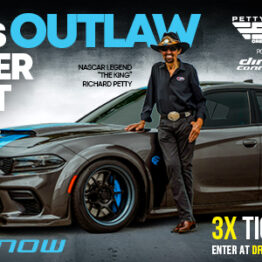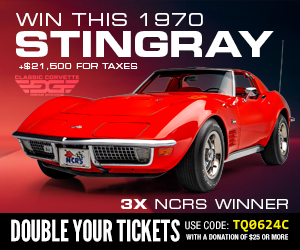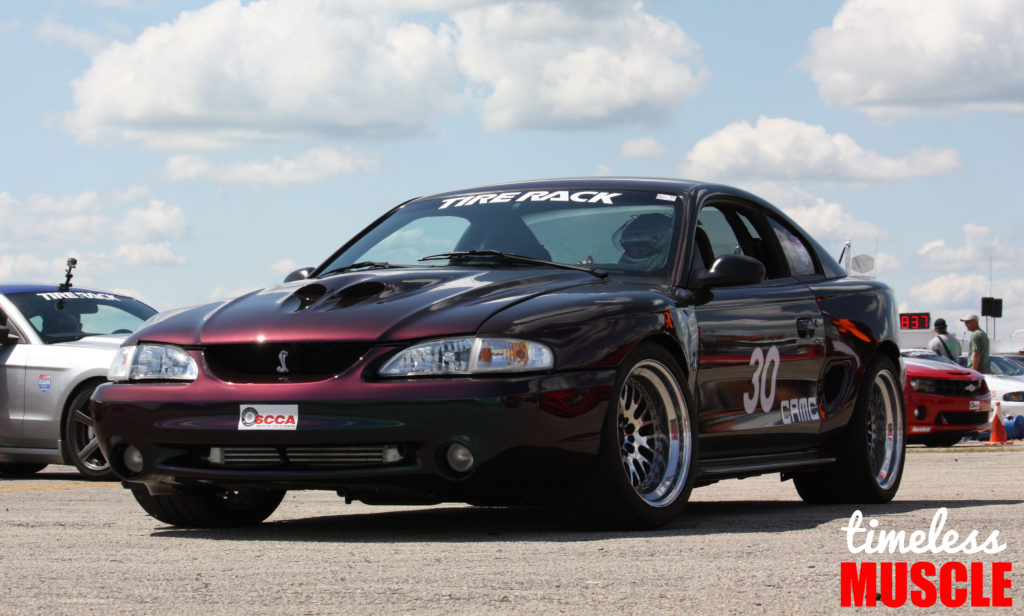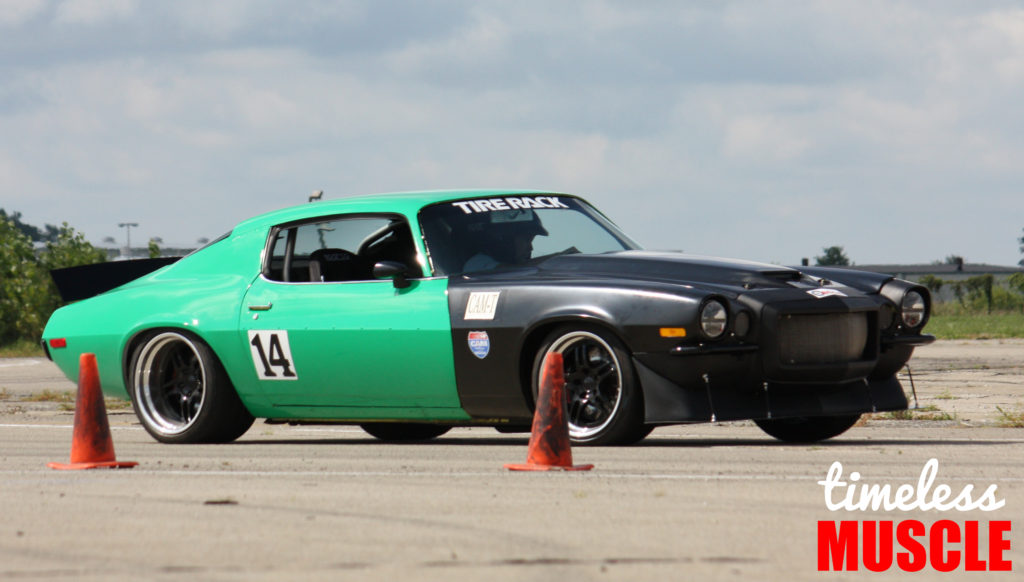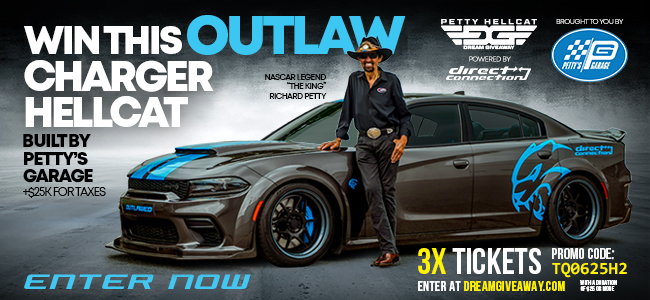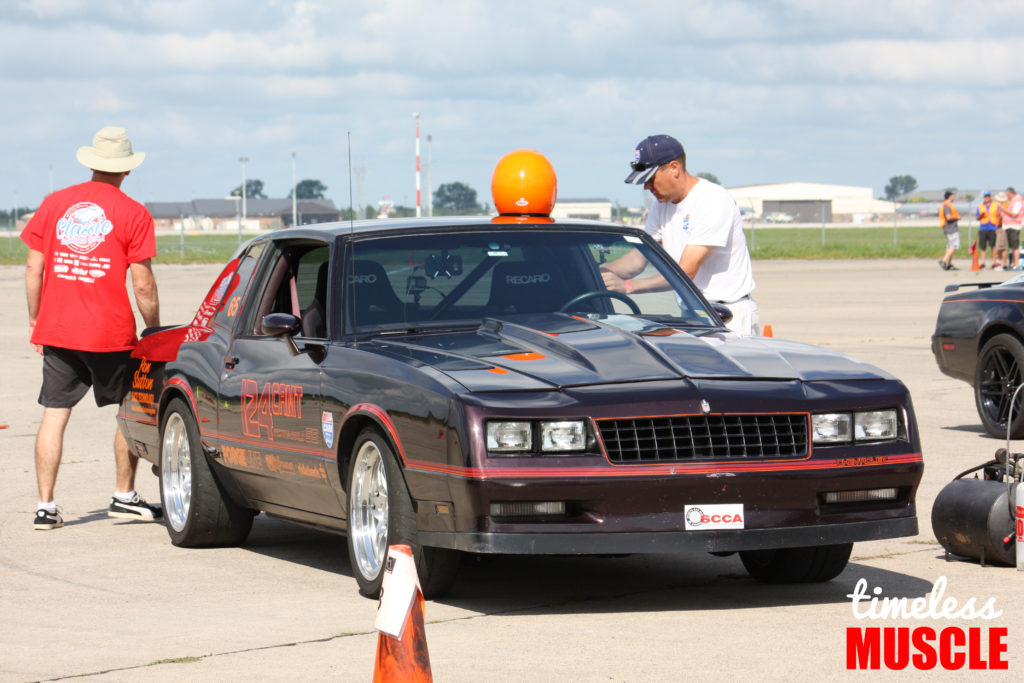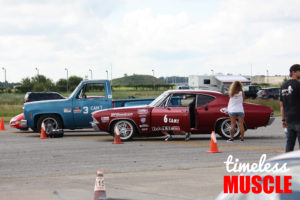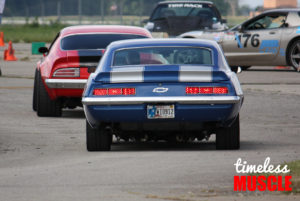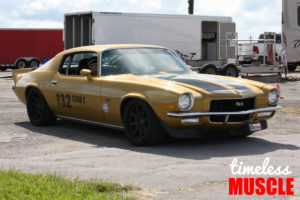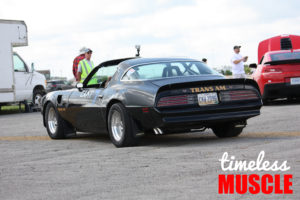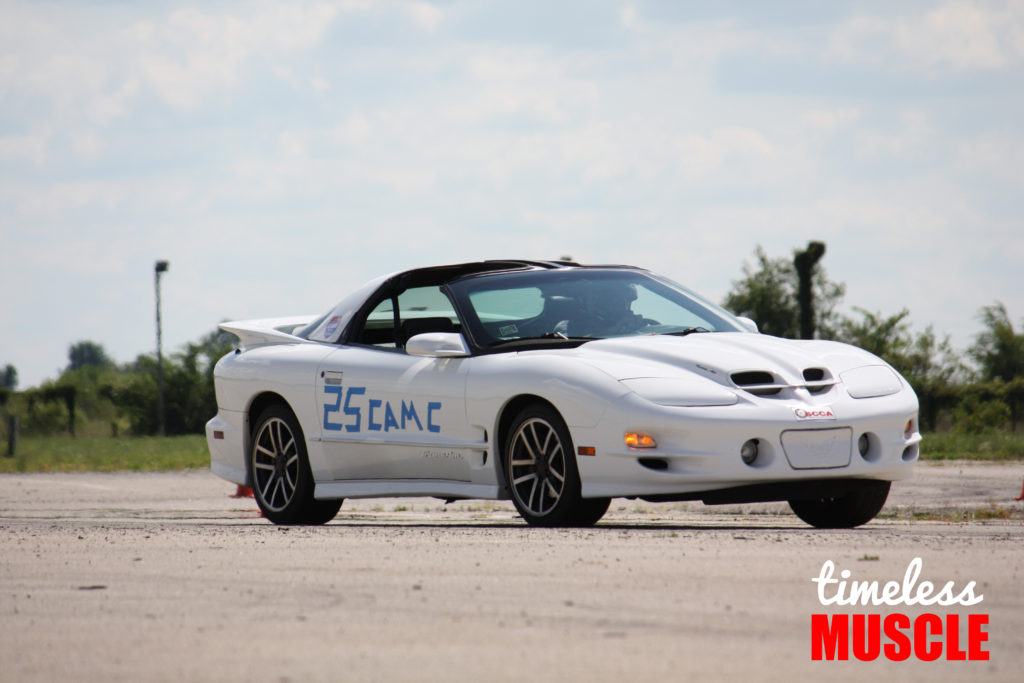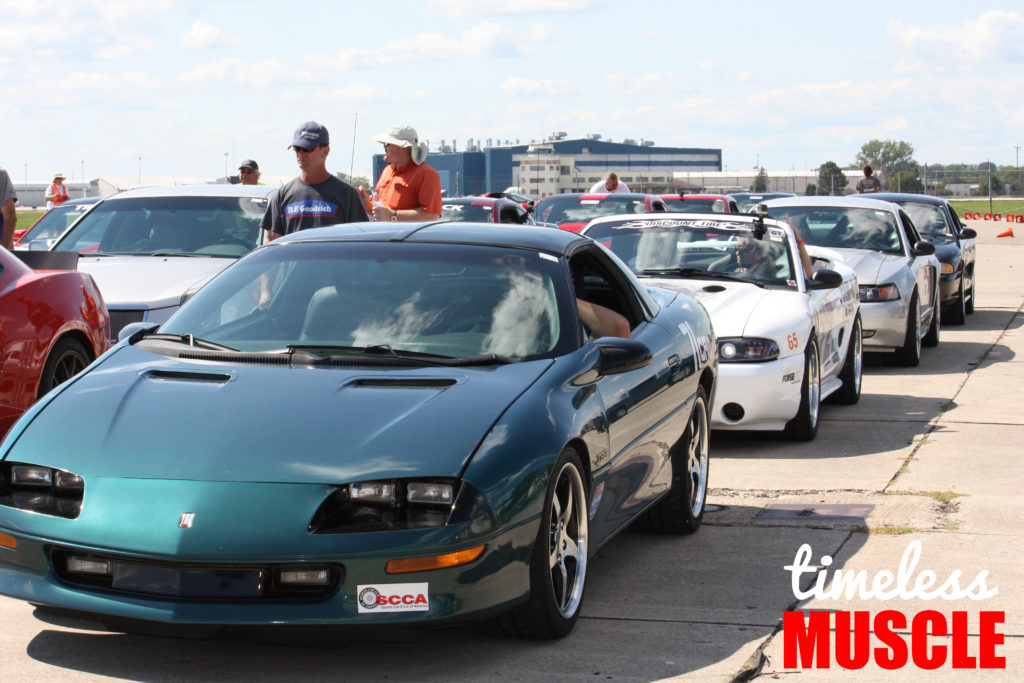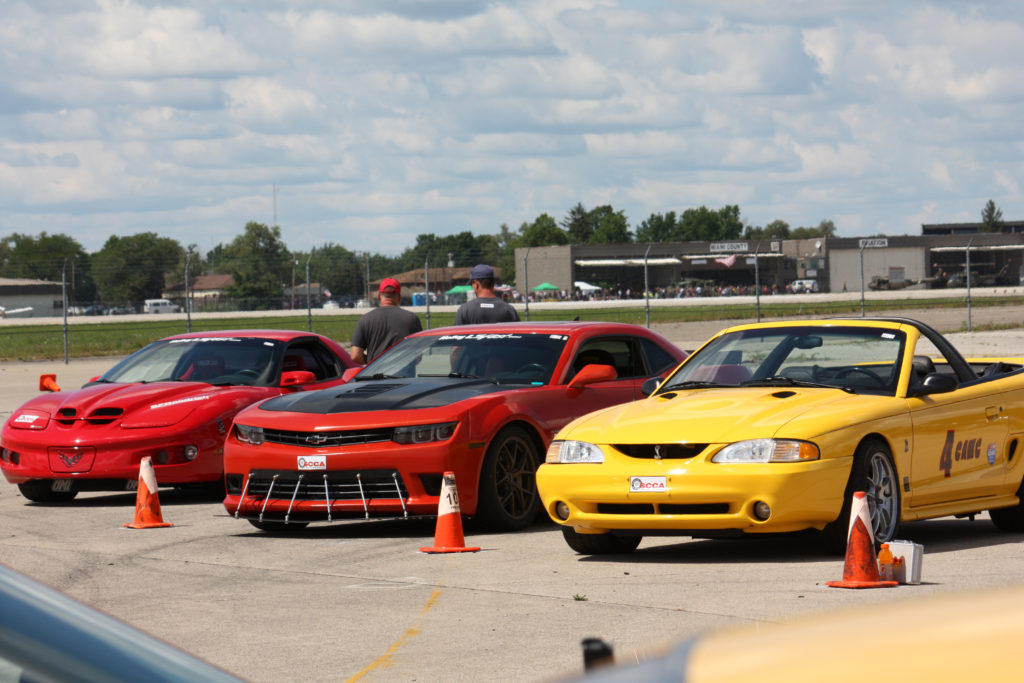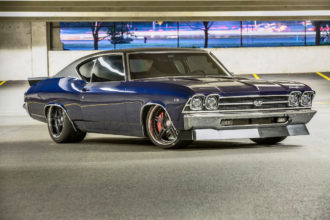
The 2017 CAM Challenge Proved that the SCCA is a Place for Classic American Muscle Cars to Race
Photos by: the Author
Last weekend, 151 cars descended upon Peru, Indiana, to test their skills against the country’s best vintage American-made cars and their skilled drivers in the SCCA Classic American Muscle Challenge. The Classic American Muscle (CAM) class and these resulting challenge events came about three years ago, when the Sports Car Club of America (SCCA) decided to create a solo class for traditional muscle cars.
One can speculate as to why the SCCA created this class, but anyone who showed up in years past to an SCCA event with their muscle car and hoped to compete will know- it’s been virtually impossible to classify a 40-plus year-old car within the existing class structure. Things like displacement and modifications really played havoc with the traditional rules, so muscle car fans would just avoid going. The Pro Touring cars weren’t welcome, so they quit trying.
Plus, there were several new events popping up that were specifically tailored to the growing Pro Touring trend, so the muscle car guys that wanted to turn corners just played in their own sandbox. Fortunately, others saw this growth and decided to do something about it. GoodGuys set up courses at their shows. The big Street Machine Nationals events started pushing autocrossing for muscle cars. Finally, the people who knew more about autocrossing than anyone launched a class structure for the new Pro Touring cars, and the SCCA CAM class was born.
At my first regional club event a few years ago, I remember staring at the lovely woman standing behind a table at the registration trailer with a dumb look when she asked, “What is modified on the car?” What isn’t modified on a 1968 Camaro? Therein lies the beauty of CAM Class, minimal rules and three classes based upon the age and original design of the car.
CAM-C: With the “C: standing for Contemporary, this class sees car and truck body styles from 1990-newer, plus CAM-T class cars with ABS and traction and stability control.
CAM-T: In this case, the “T” stands for traditional, and this class is for car and truck body styles originating from 1954-89.
CAM-S: The “S” stands for Sports, and this class is where sports cars, sedans/coupes, and trucks with seating for 2 or more adults which are eligible and not otherwise class compete.
The CAM Challenge is a way to get Classic American Muscle drivers excited about participating in their local club events, and if Peru, Indiana, gets people excited, this must be a good thing. This year’s event had 151 registered attendees. All of the drivers enjoyed a challenging, high-speed course laid out on grippy concrete.
Many remarked on how nice it is to run on a surface that the car can stick to and not eat your tires. One drawback to going to Northern Indiana in the middle of August is usually the heat and humidity. This year, participants were treated to weather that race car drivers dream of. Mornings started out in the high sixties and capped out in the low-eighties with a cool breeze blowing all day. The weather created a consistent track surface throughout the day, which kept competitors happy.
The event consisted of a Friday afternoon test and tune; drivers paid a nominal fee to run the track before the event actually started and get their suspensions (and any new parts) tuned up for the surface. Saturday, the official timing began with four runs for each run group in the morning and then the same in the afternoon. The course was run in the same direction for the entire event. The competition was tight in all the classes, with 64 cars in CAM C being the largest class.
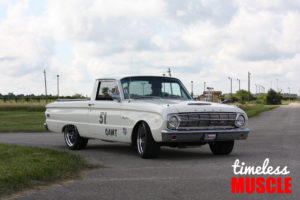 The top two cars in CAM C were separated by .071-second on Saturday. Jimmy Vajdak won CAM C, Matthew Braun won CAM T and Danny Popp won CAM S. While you may not recognize some of these names from Goodguys events or OPTIMA’s Ultimate Street Car challenges, these are skilled drivers who, for whatever reason, don’t run the more spectator-focused events.
The top two cars in CAM C were separated by .071-second on Saturday. Jimmy Vajdak won CAM C, Matthew Braun won CAM T and Danny Popp won CAM S. While you may not recognize some of these names from Goodguys events or OPTIMA’s Ultimate Street Car challenges, these are skilled drivers who, for whatever reason, don’t run the more spectator-focused events.
Sunday morning began with four runs for each driver that were used as qualifiers for the ‘Challenge’ portion of the event. The top 16 drivers in each class began a run-off to determine a winner in each class who would then move on to the final elimination round between the three top drivers. In the Challenge rounds on Sunday 9 battles in the three 16 car Challenges were won by .051-second or less.
In CAM T, Matthew Braun won by over 4 seconds when his rival Courtney Cormier took a cone-hitting penalty in the CAM T final. Danny Popp won the CAM S Challenge over Brian Regganie, and Alex Doss won over Keith Lamming in the CAM C final. Keith had the time to win by .308 but he also hit a cone on his final run to hand the win over to Alex in the end.
In the final cross-class challenge shoot-out between Danny Popp, Alex Doss and Matthew Braun, Matthew won, Danny in second and Alex in third. Matthew Braun was third in the CAM Challenge a year ago in Peru but he went home with the big trophy this year. Aside from the actual competition, there were a few notable things going on. One, Danny Popp had a co-driver in his Lingenfelter-powered C5 Corvette Z06. Mike DuSold opted to fly in to Indianapolis at the last minute, ditching his aircraft-inspired first gen Camaro for Danny’s wild blue ride. Mike proved his driving skills are top-notch in any car, coming in third on Saturday’s tight race.
Also, General Motors’ Performance Driving Team showed up with four new-gen Camaros and a C7 Corvette along with 16 drivers sharing duties. Learning about the GM driving team was a story in itself. As it turns out, none other than Camaro guru Mark Steilow manages the team of young General Motors professionals.
When I asked about how the team is structured, one of the young engineers explained that they meet once a week and practice on the GM Proving Grounds facility on the weekends. Apparently, to be let loose on the public, team members must first prove to the rest of the team that they’ve got the skills to demonstrate the car’s capabilities and win races. Skills were not lacking, and two GM team members had podium finishes on Saturday in a 2017 SS 1LE.
Most notable was the quiet presence of VetMotorsports — an organization that has partnered with SCCA Solo to provide entries and assistance to military veterans who have been injured physically and/or mentally during their time of service. In speaking with one of the vets who was co-driving a 2016 Dodge Challenger, it was remarkable how much of an impact racing a car was having on his well-being. I paid particular attention to his goals and ability to break through them as the weekend progressed.
I asked what in particular he felt was the biggest impact the racing had on him, and he explained that there are few channels in real life that help vets deal with adrenaline and fear. He went further to tell me that the racing gives him the mental skills to cope with everyday situations and stresses that would otherwise aggravate or anger him. It was an inspiring conversation.
Congrats to the winners in each class, but greater congratulations are in order for the SCCA. They saw what was happening in the enthusiast world and worked hard to become a part of it. We’re hoping it continues to grow, and by including traditional muscle cars, military war veterans working their way back to normalcy, and first-class facilities, the stodgy old SCCA has really taken big steps toward becoming truly relevant to all enthusiasts once again.
Suzy Bauter has been a car person for as long as she can remember. Already having learned how to cook and sew, she took auto shop in high school and her true passion was born for performance and wrenching. Several cars later, after about 30 years, she got the opportunity to co-build her dream car with her partner Rodney — a 1968 Camaro that she and Rodney autocross and road race all over the Southeast and Midwest. Currently under the knife in Suzy’s garage is a 1963 Rambler wagon with a 5.3 liter LS, a first-gen Camaro front subframe and a 5th-Camaro independent rear suspension.

